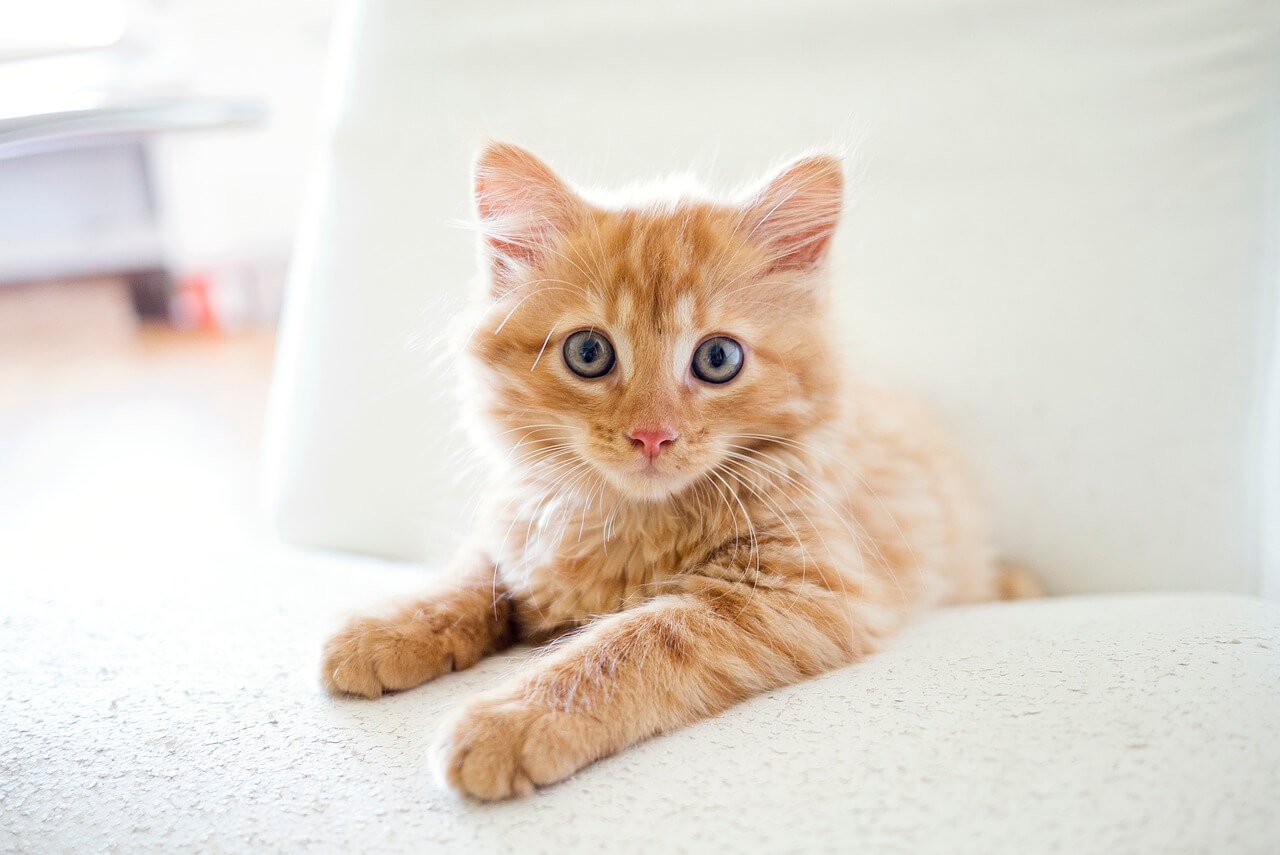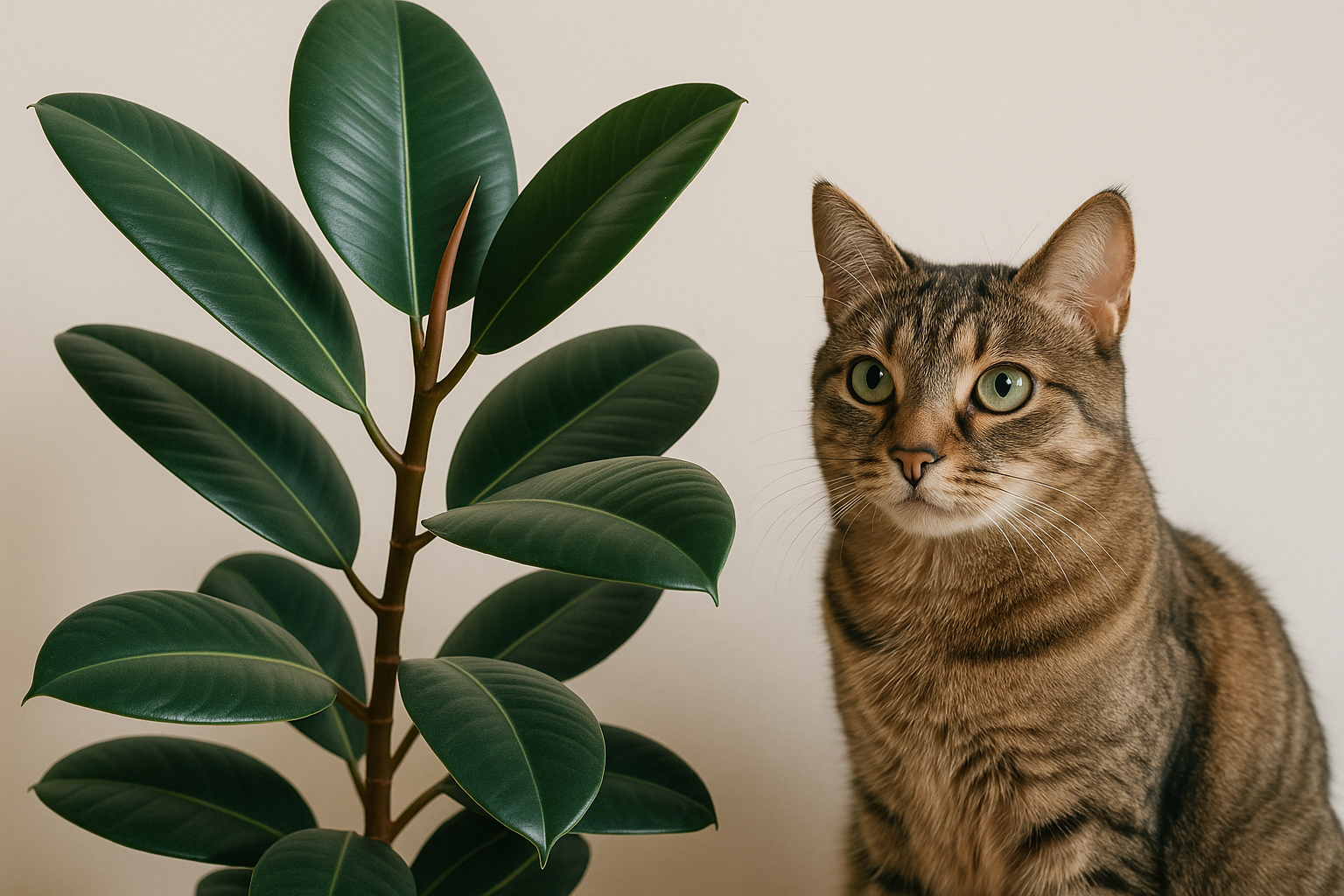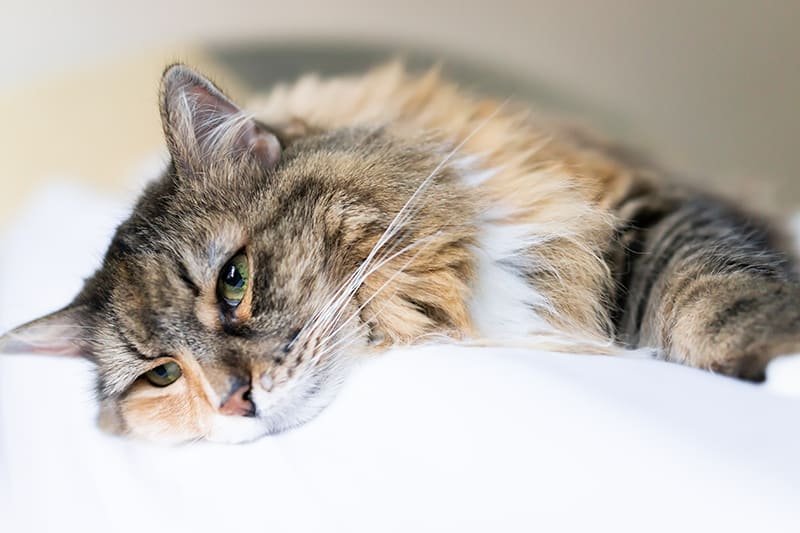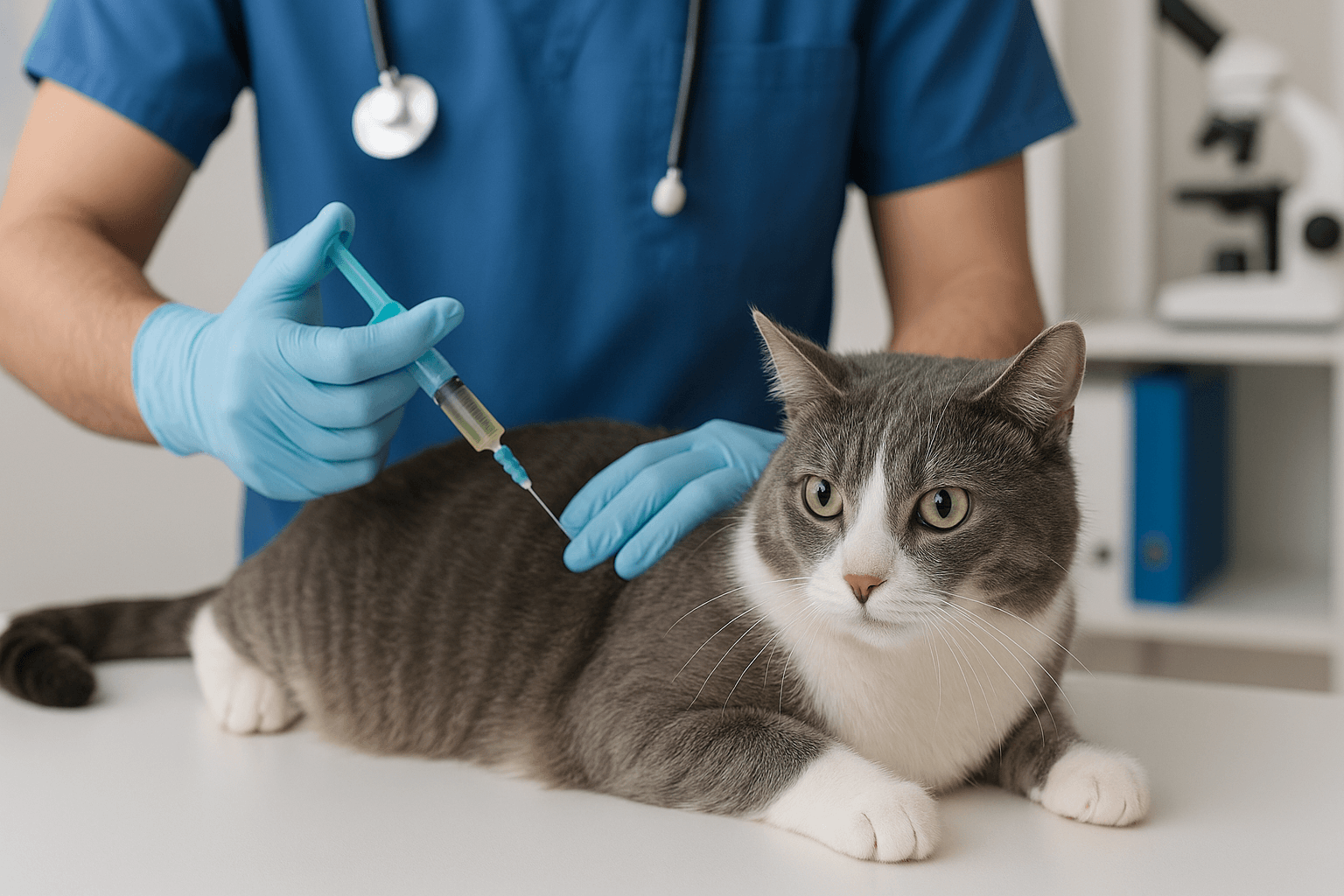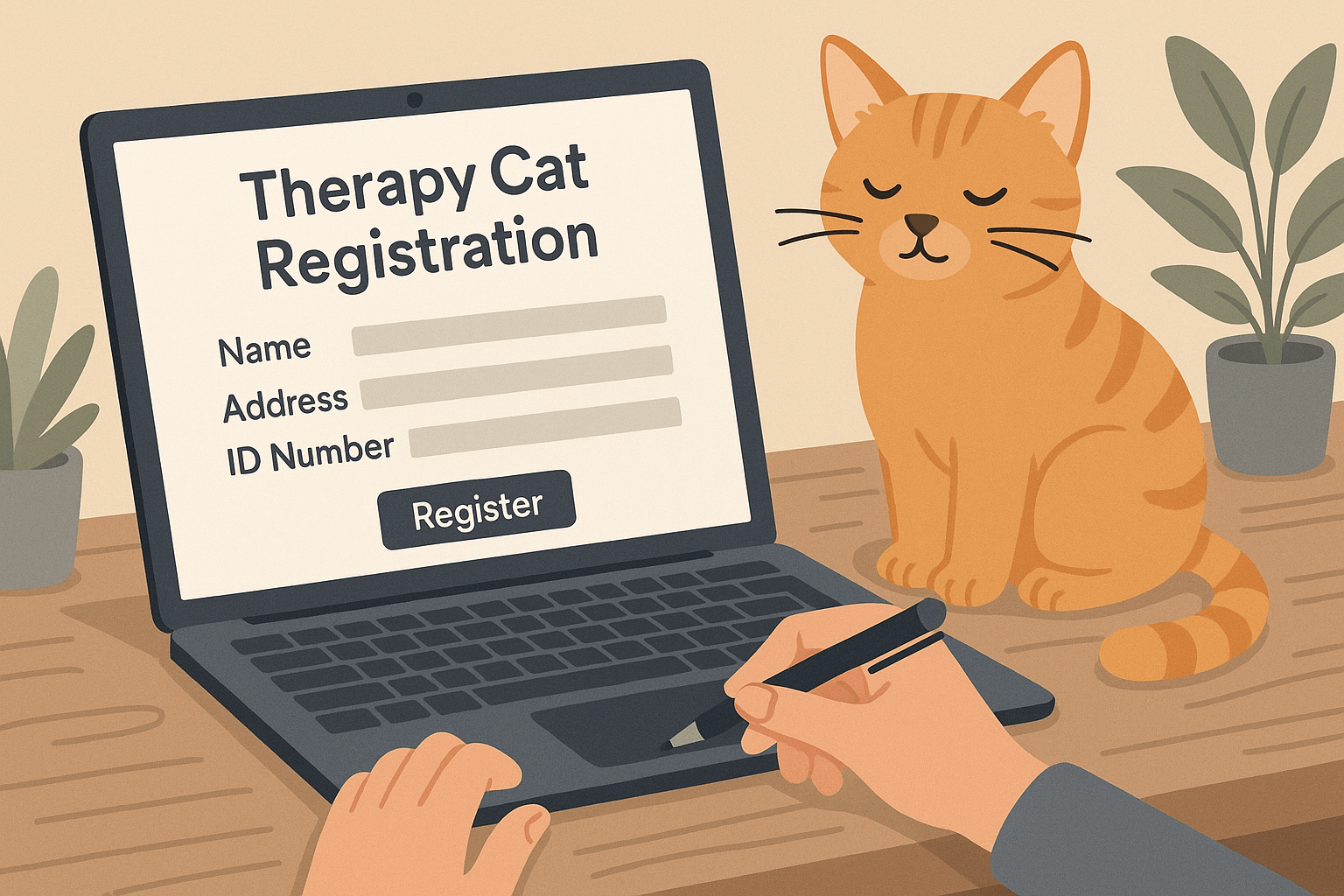How to Take Cat Blood Pressure: A Guide for Pet Owners
Monitoring your cat’s blood pressure is an essential part of ensuring their overall health, especially as they age or face chronic conditions like kidney disease or hyperthyroidism. Just like humans, cats can experience high or low blood pressure, which, if left untreated, can lead to serious complications. While taking a cat’s blood pressure may sound daunting, it’s a straightforward process when performed by a veterinarian or trained professional. However, understanding the procedure and its importance can empower you as a pet owner to advocate for your feline friend’s well-being. In this blog post, we’ll explore how cat blood pressure is measured, why it matters, and what steps you can take to support your cat’s cardiovascular health. Let’s dive in!
Why Is Monitoring Cat Blood Pressure Important?
High or low blood pressure in cats can be an indicator of underlying health issues, making regular monitoring crucial for early detection and treatment. Here are some reasons why checking your cat’s blood pressure is so important:
Early Detection of Hypertension
High blood pressure (hypertension) can damage vital organs like the kidneys, eyes, heart, and brain if not addressed promptly.Identifying Underlying Conditions
Conditions such as hyperthyroidism, chronic kidney disease, and diabetes can cause abnormal blood pressure levels.Preventing Organ Damage
Regular monitoring helps prevent long-term damage to sensitive organs caused by untreated hypertension.Improving Quality of Life
Managing blood pressure ensures your cat remains comfortable and active as they age.Tailoring Treatment Plans
Blood pressure readings help veterinarians adjust medications and treatments to suit your cat’s specific needs.
Understanding these benefits highlights the importance of including blood pressure checks in your cat’s routine veterinary care. Early intervention can make a significant difference in their health outcomes.
How Cat Blood Pressure is Measured
Taking a cat’s blood pressure involves specialized equipment and techniques designed to minimize stress and ensure accurate results. Here’s an overview of the process:
Use of Doppler or Oscillometric Devices
Veterinarians typically use either a Doppler device (which measures systolic pressure) or an oscillometric machine for more comprehensive readings.Placement of the Cuff
A small blood pressure cuff is placed around one of your cat’s front legs, hind legs, or tail, depending on the vet’s preference and the cat’s comfort.Minimizing Stress
Cats are sensitive to stress, so vets often allow them to settle in a quiet room before taking measurements.Multiple Readings
Several readings are taken to ensure accuracy, as cats’ blood pressure can fluctuate due to anxiety or environmental factors.Comparison with Normal Ranges
The results are compared to normal feline blood pressure ranges (typically 120-140 mmHg systolic) to determine if further action is needed.
This careful approach ensures that the readings are reliable and reflective of your cat’s true blood pressure. Veterinarians are trained to interpret these results accurately and provide appropriate guidance.
Check this guide 👉Understanding Cat Bloodwork Costs: Best 7 Health Tips!
Check this guide 👉Understanding Cat Blood Types: Best 7 Health Tips!

Steps in Taking Cat Blood Pressure | Tips for Accurate Results |
|---|---|
Use Doppler or oscillometric devices | Ensure the cat is calm and relaxed |
Place the cuff correctly | Avoid taking readings during stressful times |
Take multiple measurements | Allow the cat to acclimate to the environment |
Compare with normal ranges | Work with a trusted veterinarian |
Record and monitor trends over time | Follow up regularly for consistent tracking |
Signs Your Cat May Have High or Low Blood Pressure
While only a veterinarian can measure your cat’s blood pressure accurately, certain signs may indicate potential issues. Here’s what to watch for:
Increased Thirst and Urination
These symptoms are often linked to conditions like kidney disease or hyperthyroidism, which can affect blood pressure.Changes in Vision
Sudden blindness or dilated pupils may signal hypertension-related eye damage.Lethargy or Weakness
Low energy levels could indicate low blood pressure or other underlying health problems.Seizures or Fainting
These severe symptoms may occur in cases of extremely high or low blood pressure.Behavioral Changes
Irritability, restlessness, or unusual aggression may suggest discomfort related to blood pressure issues.
If you notice any of these signs, schedule a vet appointment promptly. Early diagnosis and treatment can prevent further complications and improve your cat’s quality of life.
Tips for Supporting Your Cat’s Cardiovascular Health
While regular blood pressure monitoring is essential, there are additional steps you can take to support your cat’s cardiovascular system. Here are some practical tips:
Provide a Balanced Diet
Feed your cat high-quality food rich in essential nutrients to support heart and vascular health.Maintain a Healthy Weight
Obesity can strain the cardiovascular system, so ensure your cat stays at a healthy weight through portion control and exercise.Schedule Regular Vet Check-Ups
Routine exams allow your vet to monitor your cat’s blood pressure and address any concerns early.Minimize Stress
Create a calm and predictable environment to reduce stress, which can negatively impact blood pressure.Administer Prescribed Medications
If your cat has been diagnosed with hypertension or another condition, follow your vet’s instructions for medication and care.
By incorporating these practices into your cat’s daily routine, you can help maintain their cardiovascular health and reduce the risk of blood pressure-related issues.
Common Misconceptions About Cat Blood Pressure
There are several misconceptions about cat blood pressure that can lead to confusion or misinformation. Clearing these up can help pet owners better understand the importance of monitoring this vital sign. Here are some common myths and the truth behind them:
Myth: Cats don’t get high blood pressure.
In reality, hypertension is relatively common in older cats and those with chronic health conditions like kidney disease.Myth: Blood pressure checks are unnecessary for healthy cats.
Even seemingly healthy cats can develop underlying issues, making regular checks a valuable preventive measure.Myth: High blood pressure only affects senior cats.
While more common in older cats, younger cats with certain conditions can also experience hypertension.Myth: Low blood pressure isn’t a concern.
Hypotension can be just as serious as hypertension, often signaling dehydration, heart problems, or other critical issues.Myth: Blood pressure readings are always accurate on the first try.
Cats’ stress levels and environmental factors can affect readings, so multiple measurements are often needed for accuracy.
By dispelling these myths, we can foster a better understanding of feline blood pressure and its role in overall health. Knowledge empowers us to make informed decisions for our pets.
Fun Facts About Feline Cardiovascular Health
Understanding your cat’s cardiovascular system can deepen your appreciation for their unique biology. Here are some fascinating facts about feline heart health and blood pressure:
Cats Have Faster Heart Rates Than Humans
A cat’s resting heart rate ranges from 140 to 220 beats per minute, significantly faster than the human average.Blood Pressure Varies by Age and Health
Younger, healthier cats typically have lower blood pressure, while older cats or those with chronic illnesses may experience fluctuations.The Tail is a Popular Spot for Measurements
Many vets prefer using the tail for blood pressure cuffs because it’s less invasive and easier to access.Stress Can Mimic Hypertension
A stressed cat may temporarily show elevated blood pressure readings, highlighting the need for calm environments during testing.Diet Plays a Key Role in Heart Health
Low-sodium diets can help manage blood pressure and reduce strain on the cardiovascular system.
These fun facts underscore the complexity of feline cardiovascular health. By learning more about how their bodies work, we can provide better care and support for our furry companions.
How to Prepare Your Cat for a Blood Pressure Check
Preparing your cat for a blood pressure check can make the process smoother and more accurate. Here are some practical steps to ensure your cat feels comfortable and ready:
Choose a Quiet Time
Schedule the appointment during a time when your cat is naturally calm, such as after a meal or nap.Bring Familiar Items
Bring along a favorite blanket or toy to help your cat feel secure in an unfamiliar environment.Avoid Overstimulation Beforehand
Keep your cat in a calm setting before the visit to minimize stress and anxiety.Communicate with Your Vet
Let your vet know about any recent changes in behavior or health that might affect the reading.Reward Good Behavior
Offer treats or praise after the appointment to create positive associations with vet visits.
By taking these steps, you can help reduce your cat’s stress and improve the accuracy of their blood pressure readings. Preparation is key to ensuring a successful and stress-free experience for both you and your feline friend.
Frequently Asked Questions About Cat Blood Pressure
Can I measure my cat’s blood pressure at home?
While there are no widely available home kits for cats, working closely with your vet is the best way to monitor their blood pressure.
What is considered high blood pressure for cats?
Systolic blood pressure above 160 mmHg is generally considered high and requires veterinary attention.
How often should my cat’s blood pressure be checked?
Cats with known health conditions should have their blood pressure checked every 3-6 months, while healthy cats may need less frequent monitoring.
Can stress affect my cat’s blood pressure reading?
Yes, stress can temporarily elevate blood pressure, which is why vets take multiple readings to ensure accuracy.
What causes low blood pressure in cats?
Low blood pressure (hypotension) can result from dehydration, heart failure, or shock, among other causes.
Prioritizing Your Cat’s Cardiovascular Health
Taking your cat’s blood pressure may seem like a small step, but it plays a significant role in safeguarding their overall health. By understanding the importance of blood pressure monitoring and recognizing potential warning signs, you can take proactive measures to protect your feline companion. Regular veterinary check-ups, a balanced diet, and a stress-free environment all contribute to maintaining your cat’s cardiovascular well-being. Remember, your dedication and vigilance are key to ensuring your cat lives a long, happy, and healthy life. With love and care, you can help your furry friend thrive for years to come!
Is the Rubber Tree Cat Safe? Best 7 Expert Tips! Discover expert advice on keeping rubber plants safely in cat-friendly homes and learn top tips for pet-safe plant care.
Low Red Blood Cell Count in Cats: Best 7 Expert Tips! Discover causes, symptoms, and treatment options for feline anemia. Learn how to support your cat’s health effectively with expert advice.
Understanding Megacolon Treatment: Best 7 Expert Tips! Discover effective strategies to manage feline megacolon, from dietary changes to surgical options, ensuring your cat’s comfort and long-term health.
How to Register a Therapy Cat: Best 7 Expert Tips! Discover essential steps to certify your cat as a therapy animal, prepare them for training, and make a meaningful impact in therapeutic settings.

